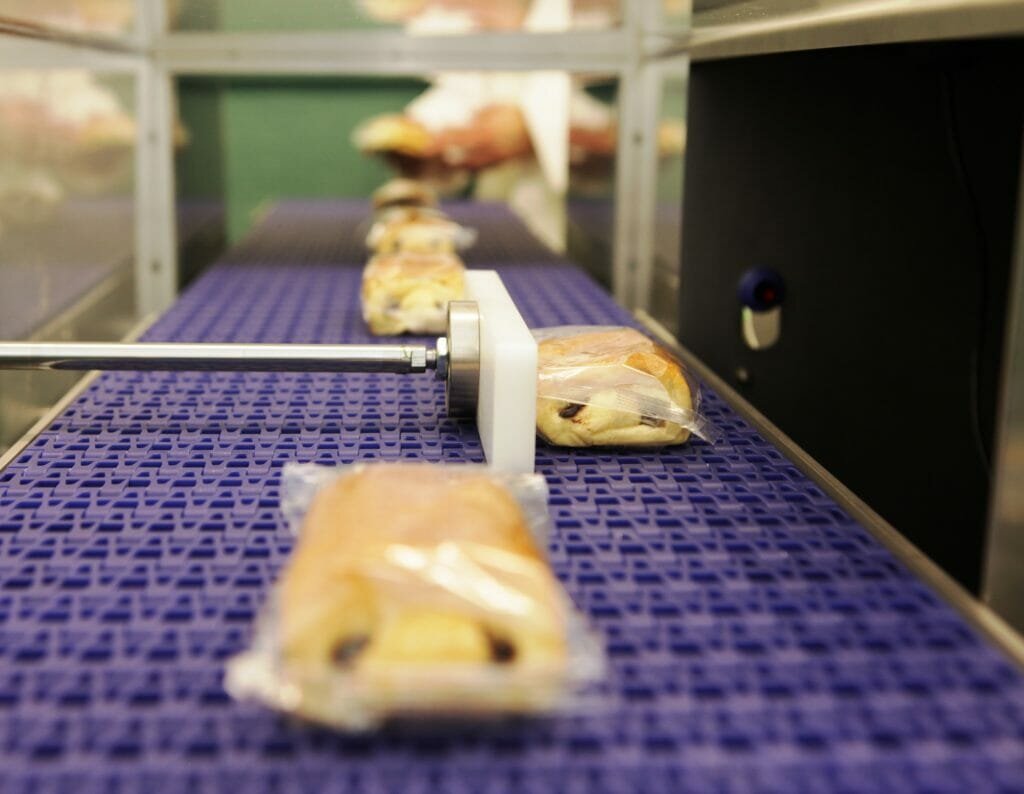The importance of our food supply chains has been spotlighted during COVID-19. Stockpiling in the early days created shortages in staple goods, including fresh produce, canned goods, pasta and baking ingredients. A knock-on effect of hoarding food saw prices rise, led by cereals, sugar, dairy and vegetable oils. Imported fresh commodities were stranded and rotted at ports. Resulting in a surge in food waste and food inequality in many nations, the UK included.
Food safety and inspection champion Fortress Technology examines the changing attitudes towards food waste during lockdown, the impact of the hospitality closures and how automation and lean manufacturing can bring greater order and transparency to the food chain. With the global population set to require 70 percent more food by 2050, now’s the time to further address wasteful actions.
A sign of the times
Before the pandemic, 11.5 percent of UK households with children experienced food poverty. Yet, this 2020 crisis has placed thousands more into food insecurity. Data gathered by The Food Foundation now reveals that 14 percent of adults living with children reported experiencing moderate or severe food insecurity in the last six months. This equates to four million people, including 2.3 million children[i]. A high profile campaign by footballer Marcus Rashford has further heightened awareness about the extent of the food poverty issue.
If nothing else, the fear of food shortages has had a positive change in mindset among UK householders. People batch and scratch cooked their way through lockdown boredom.
Although a number of waste interventions have been implemented and more than £300million in food (the equivalent of 180 tonnes) was diverted from waste this year, there’s still some work to go if businesses across the whole value chain are the meet the Courtauld Commitment’s environmental targets for 2025. Yet it’s already clear from WRAP’s 2020 report that food and beverage businesses implementing the Target, Measure, Act Roadmap are seeing the bottom line benefits[ii]. Despite the disruptions of the pandemic, the UN Sustainable Development Goal (SDG) remains to reduce food loss and waste by 50 percent in the next decade.
The role of automation
So, what can food processors do to help? Equipment choices, robust quality control processes, traceability, and staff training are all critical factors when it comes to reducing production food waste.
Reflecting on 2020, Fortress Technology Managing Director Phil Brown praises the speed in which UK and European food manufacturers flexed to changing consumer demands. The utilisation of automation tools and ‘smart’ inspection machinery helped to ensure waste remained tightly controlled and also maintained food safety and production efficiency.
Phil expands: “Most of today’s food metal detectors are ‘smart’ and connected. This allows immediate and remote access, enabling food manufacturers to view the current equipment status, monitor rejects and maintain continuous, smooth production lines. Operational data can be compared and gives production managers the ‘real time’ tools to spot trends and patterns, such as when and where the most rejects are occurring. From a waste management perspective, this is critical.”
False rejects don’t just impact the physical waste where perfectly good food is discarded. Lower factory yield can undermine the cost-effectiveness of an entire operation, while repeated stoppages and trouble-shooting will incur unnecessary cost. Industry estimates put the cost per line of false rejects at over £14,000, depending on the scale of the problem.

False rejects occur when good product is identified as containing a metal contaminant
Tackling time wasting
Digital testing is another area where demand has accelerated. Regular checks that are carried out manually can be a drain on resources. This is particularly true when testing metal detectors is made difficult due to access, machine position, product flow and environmental conditions.
Guaranteed to save food manufacturers time and money, Halo Digital Testing from Fortress automatically and independently checks for all metal materials – ferrous, non-ferrous and stainless steel. Systems fitted with feedback sensors will also check the reject operation, including confirmation that the reject system is working, the flow and fullness of the reject bin. The line will only halt if the metal detector or reject checks fail.
In another first for 2020, Fortress unveiled a unique new conveyor design. Featured currently on the company’s premium Raptor checkweighing series, it is another big labour, time and money saver, as well as being more hygienic.
Overcoming the longstanding industry challenge of loosening belt tension during machine sanitation, operators simply unclip and disconnect the conveyor motor and lift out the entire conveyor assembly. In just seconds, the conveyor belt is removed, along with its individual components, such as rollers and bearings, for maintenance and cleaning. Belt tension and alignment are instantly restored when clipped back into place.
Optimising detection
From research Fortress has conducted with manufacturers over the years, naturally occurring food contaminants such as pips or shell remain the most prevalent consumer complaint. Closely followed by insects. However, contaminants that could potentially harm a person – such as glass, rock or metal – are still the most potentially brand-damaging.
Given that metal is everywhere in the food supply chain, Fortress has intentionally focused its efforts on addressing this harmful contaminant risk. Within factories are a wide array of mixers, dicers and slicers – most made from stainless steel. Yet, metal could also be introduced upstream. For example, a can of soda discarded in a field of grain, which is then harvested using powerful tractors, means that metal fragments, many of which are non-magnetic, can easily be dispersed. In recent years the company has seen a number of farms install metal detectors to inspect vegetables, potatoes and grains in bulk before shipment to manufacturers for processing.
These upstream inspection machines can help to capture contaminants in their largest form, which also helps to minimise waste. Phil explains: “Upstream is often the place where we can get two or three times the performance level. There is a better opportunity to identify where the source of a potential problem may be if there are several units throughout the line, especially when adding ingredients at different points or performing different processes.”
Increasing the volume of inspection lanes for specific product ranges can also result in reduced food waste and enhance inspection productivity.
High-speed, multi-line food packing operations have a number of options when it comes to contaminant detection. Manufacturers can channel multiple lanes through a single, large metal detection aperture. The clear drawback here is that the larger aperture size sacrifices valuable levels of sensitivity. In addition, any reject system will remove an entire line of product across all of the lanes being checked, thus creating unnecessary waste. The Fortress multi-lane solution comprises a single metal detection system with multiple apertures for each lane and a single operator panel. Each aperture is sized as closely as possible to the product.
Too good to giveaway
Overproduction and overfilling are other wasteful measures that contribute to food loss. Even a few grams surplus in every food pack can rapidly equate to thousands of pounds per month. The Raptor from Fortress introduces high-end weight control technology to target these operational inefficiencies.
By instantaneously capturing sample readings of individual packs by the millisecond, the Raptor control system provides highly accurate and consistent weighing results. Only possible by using the most advanced ARM processors, this data capture and analytics is a game changer for food factories concerned about product waste and giveaway, explains Phil. “Using Raptor’s digital data capture feature, manufacturers can pinpoint upstream operational deficiencies, including overfilling of packs, processing and packaging waste.”
Food for thought
As COVID-19 continues to strain public health systems globally, the hunger pandemic continues to ravage communities. Many countries are experiencing retail food price inflation as a result of supply disruptions due to COVID-19, currency devaluations and other factors. Brexit could further increase food prices, with an estimated 85 percent of EU food imports subject to tariffs. For agricultural products especially, the hikes could be high. While a no-deal situation could result in additional border checks, further adding to availability and pricing pressures.
These higher prices means UK processors importing raw ingredients will inevitably find their profit margins being squeezed even harder. Bearing these additional costs is likely to mean retail prices will go up and product choice and SKUs will likely decline.
Avoidable inefficiencies are where food processors can make the biggest waste and financial savings. Automated calibration of product machinery helps to minimise repeat stoppages and reduce start up waste. Digital devices connecting upstream and end of line systems can talk to one another, stopping bottlenecks occurring and good food being diverted into waste when machines are reset. Removing contaminated products upstream in raw products prevents multiple metal contaminants entering the food chain, which could result in a costly product recall. And addressing product giveaway helps with portion control and inventory. These digital inspection tools can all help to tackle this war on food waste.
[i] https://foodfoundation.org.uk/new-food-foundation-data-sept-2020/
[ii] https://wrap.org.uk/sites/files/wrap/Food-Waste-Reduction-Roadmap-Progress-Report-2020_0.pdf




